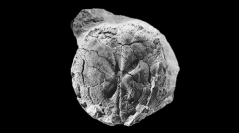

 Geodiversitas
22 (4) - Pages 509-523
Geodiversitas
22 (4) - Pages 509-523The synthetic analysis of Messinian, Plio-Pleistocene and Recent spatangoids of the genus Brissopsis has allowed to describe the morphological variations of Mediterranean representatives of these echinoids, following the variations of the two morphological groups B. gr. atlantica and B. gr. lyrifera from the Late Neogene to the Present-Day. It is shown that the two groups were clearly differenciated during the Messinian and that they survived in the Mediterranean during the Pliocene, and then during the Quaternary, without main morphological changes. So, the two groups have survived to the "Messinian salinity event". Moreover, the presence of B. gr. lyrifera in marls and limestones interbedded in the gypsum of Los Yesos section (Sorbas basin, SE Spain) is demonstrated. Both in Recent seas and in the ante-gypsum Messinian series, B. gr. lyrifera is one of the deepest spatangoids, living in deeper environments than those settled by Clypeaster and Schizaster. So, the absence of these two last echinoids and the abundance of B. gr. lyrifera in the marls and the limestones interbedded in the gypsum are arguments in favour of the gypsum deposit under relatively large depth. The survival of these echinoids, typically stenohaline and marine organisms, in the last levels of Messinian gypsum of Sorbas basin testifies the existence of marine connexions between this basin and normal marine areas during the evaporitic episode.
Echinoids, Brissopsis, biodiversity, Mediterranean, palaeoecology, evaporites, Messinian